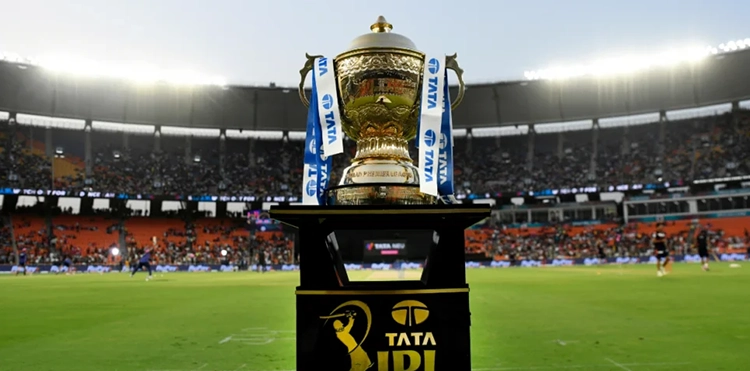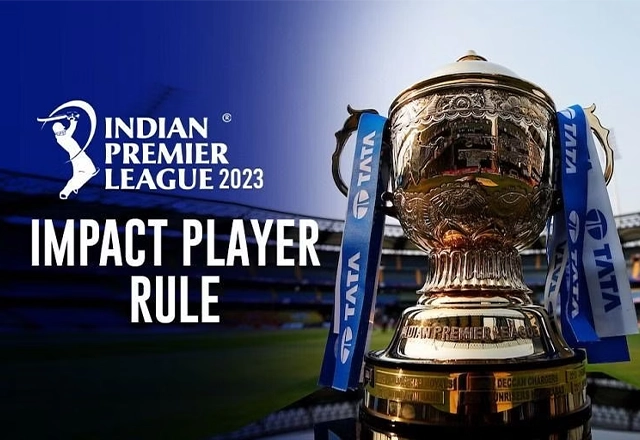LSG has been proactive, although not always successful, while CSK and Punjab took a straightforward approach. On the other hand, RCB did not utilize one. Let’s take a look at how each team performed.
Trent Woodhill, the innovative Australian coach, is credited with originating the Impact Player rule used in the IPL today. He first introduced a similar rule called the X-factor with his team in the Big Bash League (BBL), but it was discontinued last year. In a statement to this newspaper, Woodhill expressed disappointment that the rule was not embraced by clubs as much as he had hoped, citing Australian cricket’s conservative nature as a possible factor.
Let’s examine how Indian cricket is handling the situation. Are they taking a conservative or experimental approach? We’ll review the evidence to find out.
IPL Teams Utilization Of The Impact Player Rule
Lucknow Super Giants (LSG)
The events of Monday night were quite intriguing, especially with regards to IPL Teams Utilization Of The Impact Player Rule. In the last over of CSK’s innings, LSG brought in Badoni as the Impact Player, replacing Avesh Khan. Dhoni hit two impressive sixes off Mark Wood, and CSK finished with a total of 217. Badoni came in to bat when LSG needed 88 runs from 40 balls. Pooran and Gowtham hit a few sixes, and the equation was reduced to 44 runs from 26 balls, which was achievable in T20 terms. However, Badoni struggled to perform and couldn’t turn it on. Despite being a good and innovative batsman who uses lap shots and angles well, he couldn’t score as CSK bowled well outside off, and his run tap was squeezed shut.
Although he tried his best, he couldn’t connect, and LSG lost the match. With Quinton de Kock joining the team soon, LSG may have to decide whether to pick Badoni as their Impact Player (IP) in the next games, especially if the chase is steep, or have someone like Gowtham instead.
LSG has been one of the most proactive teams when it comes to IPL teams utilization of the Impact Player rule. During the first game, they made a bold move by subbing out Ayush Badoni after he finished batting and replacing him with K Gowtham. This was the only instance where a team did not wait for their batting to end before using the rule. The decision proved to be fruitful as Gowtham played a crucial role in their victory by hitting a six and delivering a tidy spell, conceding just 23 runs in his 4 overs during the chase.
Read More : About IPL Teams Utilization Of The Impact Player Rule 2023
Chennai Super Kings (CSK)
At the beginning of the first game, MS Dhoni had expressed his opinion that the IP rule was a “luxury” for captains. However, after two games, he had to caution his Impact Player (IP) player Tushar Deshpande about the frequent occurrence of no-balls and wides. He even hinted that if this continues, a new captain may have to be appointed.

After their batting innings in both games, IPL Teams Utilization Of The Impact Player Rule was observed when Deshpande was chosen to replace Ambati Rayudu. However, Deshpande struggled in the first game, conceding 51 runs in just 3.2 overs. In the second game, he struggled with no-balls and wides, ultimately giving up 45 runs in his 4 overs. Despite these difficulties, it is expected that Dhoni will give Deshpande more opportunities as he showed promise by taking two wickets in the last game.
It’s possible that nerves may have played a role in his performance, and CSK won’t give up on him just yet. So far, the team has simply replaced a batsman who can’t bowl with a bowler, and they will continue to evaluate Deshpande’s potential.
Delhi Capitals (DC)
Aman Khan, an allrounder, was selected for the team based on his impressive power-hitting skills during the training camp. Head coach Ricky Ponting was particularly impressed with his performance, stating that he had dominated the first practice game by scoring an unbeaten 72 runs off just 38 balls. Ponting also praised Khan’s physical attributes, describing him as big, tall, strong, and powerful. Prior to joining Delhi, Khan had already made a name for himself in the Mumbai T20 league. To bring him into the squad, Delhi traded Shardul Thakur with KKR.
Also Read : IPL Teams Utilization Of The Impact Player Rule 2023 & IPL Eye on Innovation
Khan is not only a skilled batsman but also a pace bowler. During the game against LSG, IPL Teams Utilization Of The Impact Player Rule was seen when Delhi had replaced Khaleel Ahmed (who had taken 2 wickets for 30 runs) with Khan as an IP. Aman Khan had come out to bat when Delhi was struggling at 112 for 6 in 15.3 overs while chasing a target of 194. Unfortunately, he was dismissed for just four runs. However, with the support of Ponting and Sourav Ganguly, who are both fans of his talent, Aman Khan will be given more opportunities to showcase his skills as an Impact Player (IP).
Gujarat Titans (GT)
Hardik Pandya was honest in admitting that he doesn’t worry about the IPL Teams Utilization Of The Impact Player Rule and has entrusted the responsibility to the bowling coach, Ashish Nehra. However, Nehra faced a setback in the first game as Kane Williamson injured his knee and had to withdraw from IPL. As a replacement, Sai Sudarsan was brought in to bat during the chase, and he performed admirably by scoring 23 runs and forming a partnership with Shubman Gill, which ultimately led to a successful chase.
Punjab Kings (PBKS)
Punjab Kings followed the footsteps of CSK by replacing a batsman with a bowler, as Bhanuka Rajapaksa (who scored 50 runs off 32 balls) was replaced by the all-rounder Rishi Dhawan. However, Dhawan only bowled one over and conceded 15 runs. The decision to bring in Dhawan was understandable as he had performed well in the Syed Mushtaq Ali tournament, taking 13 wickets at an economy rate of just over 7 runs per over for the runners-up Himachal Pradesh. This move also shows how IPL teams are utilizing the Impact Player rule to their advantage.
Additionally, Dhawan’s inclusion in the team allows Punjab Kings to use the IP rule even if they are batting first, as he can contribute with his batting skills as well. Only time will tell how Dhawan performs in the upcoming matches of IPL.
Kolkata Knight Riders (KKR)
IPL Teams Utilization Of The Impact Player Rule was observed when KKR made a change in their playing XI by selecting Venkatesh Iyer as their innings opener instead of Varun Chakravarthy, who had a good bowling performance with figures of 1 for 23 from four overs. Iyer played a crucial role in the chase of 192 by adding 70 runs with Andre Russel, scoring 34 runs at a strike rate of 121.43, which brought KKR closer to the target. However, when Iyer got out, KKR still needed 54 runs from 28 balls, but unfortunately, the match was interrupted by rain, and KKR lost the game by 7 runs on DLS method.
Royal Challengers Bangalore (RCB)
When all IPL Teams utilizing of the impact player rule, RCB was the only team that did not use the IP in their match against Mumbai Indians, as their openers Faf du Plessis and Virat Kohli almost won the game single-handedly. Although there was a chance to use the IP during their bowling innings when left-arm pacer Reece Topley left the field due to a fielding injury, RCB had enough bowling options and possibly decided to save the IP for the chase.
However, Kohli and Faf’s impressive performance with the bat meant that the IP was not needed in the end.
Find Out More About : IPL Teams Utilization Of The Impact Player Rule & IPL New Rules 2023
Mumbai Indians (MI)
The IPL Teams Utilization Of The Impact Player Rule was observed when MI played only three overseas players and used the fourth, Jason Behrendorff, as their Impact Player. Behrendorff replaced Suryakumar Yadav, who is the vice-captain of the team and is expected to take over as captain if Rohit Sharma decides to rest. This decision was somewhat curious, as it raised the question of what would have happened if Rohit had been injured after the IP substitution was made. Unfortunately, Behrendorff was unable to make an impact, as Kohli-Faf plundered 37 runs from his three overs.
Sunrisers Hyderabad (SRH)
The IPL Teams Utilization of the impact player rule was become helpful when Hyderabad’s IP Abdul Samad faced a difficult task chasing down Rajasthan Royals’ target of 204. When he came in to bat, the situation was dire as Hyderabad had lost five wickets for just 48 runs. Although Samad’s score of 32 did not result in any significant turnaround, it did help to reduce the margin of defeat.
Rajasthan Royals (RR)
The decision to play Navdeep Saini in the match was more about giving him some game time rather than a tactical move, given the match situation. With a score of 203 on the board and Hyderabad struggling at 63 for 6, Saini was given a chance to bowl.
Although he was inconsistent, even delivering a beamer, the Injured Player (IP) rule allowed Rajasthan to give him some valuable experience in a real match situation. Without this rule, Saini may not have had the opportunity to play and gain experience before a crucial game.
Get IPL 2023 Live Score along with Points Table & Schedule Updates at IceCric.News and Follow for Live Updates – Twitter, Facebook & Instagram.




